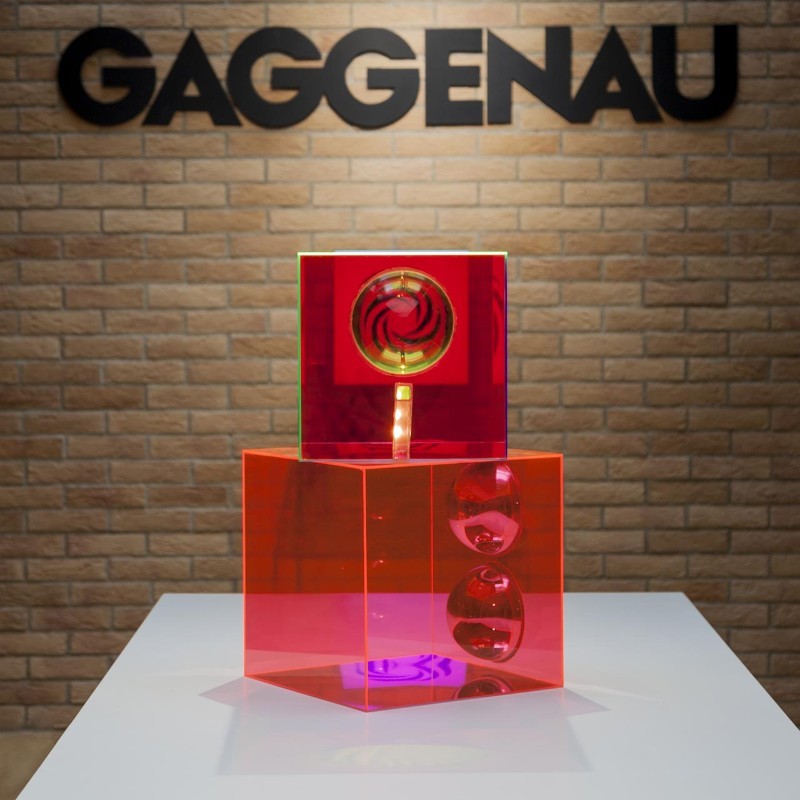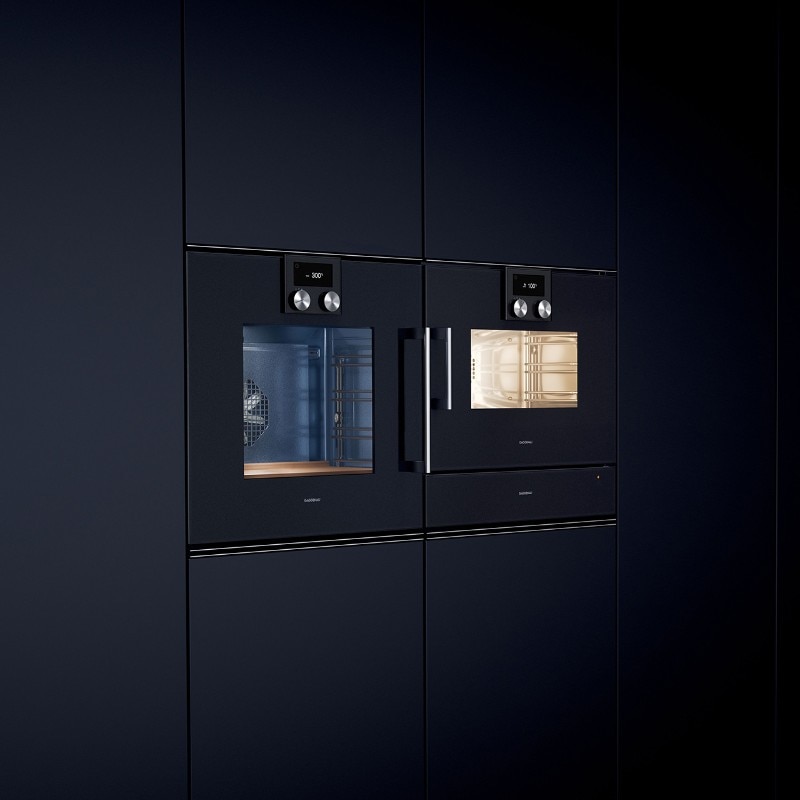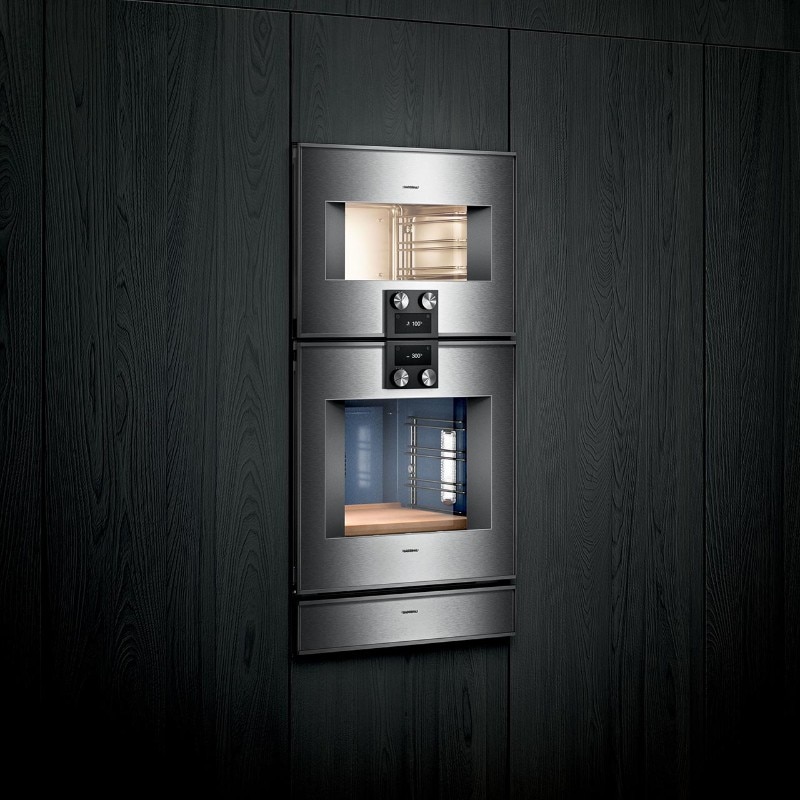A horizon of complexity, not only technical but also and above all anthropological, is the scenario faced by the team of Sven Baacke, Head of Design Global Brand of Gaggenau, a German brand specialized in the production of high-end kitchen appliances. In this interview, he tells us how to design appliances with ambitions of longevity, balancing knobs and user interfaces, but also German heart and global contexts of use.
How many people is the Gaggenau Design Team made up of?
We’re nine designers, so we can say it’s quite a small team. Concepts are always developed internally although we have a lot of external partners, especially user interface designers and architects. In my team there are a lot of interesting people: all of them are designers with challenging interests – one of them is knife maker, other one a photographer, one is a softbox shaper - and everybody is very passionate about cooking. The background is quite diverse, we have a lot of discussions because everybody wants to have the best out of it.
Do you follow a specific design method?
Gaggenau is a global brand, but we do not adapt our design to different styles: it’s the context that gets totally different. The cooking habits change enormously on a global scale: in China you have a wet kitchen and a dry kitchen, in the US kitchens are big and organized around the fridge, while in Italy is more about the cooktop and the cooking itself, and in Germany is more about the oven. That’s why collecting information is crucial and not necessarily easy. In the early stages of our design development we do some backcasting: we examine a lot of ideas, projecting us in 2030 or even in 2035. Which kind of technology will we use? How will our urban environment be? How will food and healthy cooking look like? Will we still cook with a knife? All these ideas are gathered in what we call vision rooms, a physical room where all these elements come together to outline a forecast.
How do you elaborate these inputs bringing them into the development phase?
When we have completed our visions, we jump back from 2035 to 2025 so that we are able to anticipate decisions at the right timing. Then everything needs to be evaluated before getting to the team in charge of the implementation, which is when the collaboration with the engineers, but also with customers and chefs, jump in. In case we work with predecessors of products the development process might be quicker, but I prefer to think about it as a long process that generally takes from three to five years. We always work within a system of appliances: usually customers don’t buy just a Gaggenau oven, because they want a kitchen where details fit together, and user interfaces are interlinked and speak the same language.

Which is your take about the role of digital interfaces in
the future of appliances?
Is about a lot of questions: what is digital luxury, for
example? Is there such a thing or is all analog? It’s a big question not only
for us, and I think the answer is the right dose of things: you need to be
digital as a brand, but also to remain tangible so that users can touch not
only knobs and user interfaces, but also materials.
Gaggenau is a German brand. How does it reflect the characteristics and values of Made in Germany?
Gaggeganu is very German, it has been founded in Germany in 1683 in the Black Forest. It’s a long heritage, which sometimes is pretty amazing for designers even if on the other hand can represent a heavy load. It keeps this spirit of German engineering, and you see it every day in the positive fight between the designers and the engineers to get things right. I’d describe it as a feeling about quality, craftmanship, about precise manufacturing, about getting pieces neatly together, the idea that appliances can have some patina.

Do you think that appliances can have a patina?
Yes of course, we also have an advertising about that. The first scratch hurts you, but in 20 years it will tell a story. Good appliances have materials that age well.
Which role does sustainability play for Gaggenau? How do you try to apply the principles of circular economy?
I think that the overall industry is really at the beginning of the process. What Gaggenau is trying to do is designing appliances that are long lasting, that are not perceived as out of date both in terms of style and user interfaces. Another important aspect c repair: for example, you can dismantle a Gaggenau oven with a screwdriver because there are no clippings, so you can easily maintain it.
At Gaggenau since 2003, you have been personally involved in the development of new products, including the 200 series ovens. What did you learn from this priviledged observation point?
When I started, I never thought that an oven could be so complicated: there are many standards about safety, energy consumption, sustainability, not speaking about merging brand values and quality standards and then checking the whole thing. When I started the oven had two knobs, but then later on I’ve seen a lot of features and trends that we didn’t necessarily implement, because at the end of the day the kitchen is still the heart of the home and is the appliances that infuse the soul to a kitchen. That’s why I love when people tell me “I have a Gaggenau kitchen”: it’s not about the furniture, it’s about the tool they have. It’s more than style, it’s the heart.


